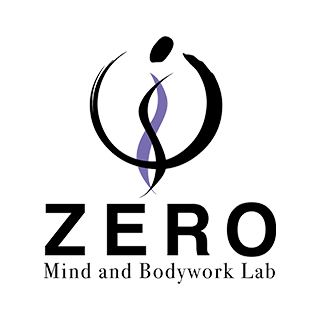Introduction
Hello, my name is Hidefumi Otsuka, and I offer Rolfing® sessions in Shibuya, Tokyo.

This year, for the first time in a decade, I decided to participate in the Advanced Rolfing® Training (AT) held by the Japan Rolfing Association in Ichigaya, Tokyo.
Phase 1 took place over 12 days, from April 8 to 25, 2025, running Tuesday to Friday each week. Phase 2 runs for another 12 days from June 24 to July 11, also Tuesday to Friday—making a total of 24 training days.
What is Advanced Training?
To participate in AT, one must first become a Certified Rolfer and practice for 3 to 7 years. In addition, 18 units of continuing education (CE) must be completed with Rolfing instructors (1 unit = 1 day of CE). Including the 24 days of AT, the total amounts to 42 training days to qualify for certification.
Our instructors for this AT are Ray McCall from the U.S. and Hiroshi Tahata from Japan.
Yesterday was the first day of Phase 2. As I begin this second phase, I’d like to take a moment to reflect on what I learned in Phase 1.
What I Learned in Phase 1
Phase 1 was an intense 12-day period of deep learning. Aside from hands-on techniques, six key concepts stood out:
- Jeff Maitland’s three guiding questions
- Awareness of the “neutral” state
- The distinction between intention and intentionality
- How to cultivate a neutral state
- Framework thinking
- What integration truly means
Jeff Maitland’s Three Questions
The very first topic we explored was Jeff Maitland’s three questions for structuring a session:
- Where do you start? (What approach or mindset do you begin the session with?)
- What do you do next?
- When are you done? (How do you determine when the session is complete?)
These questions provide a foundation for session design:
- What approach will you take at the start?
- Based on what you perceive, how will you decide your next move?
- What tells you the session has reached a meaningful close?
Throughout Phase 1, we were encouraged to keep these questions in mind during client sessions and practice sessions with peers.
Awareness of Neutral — The Body Can Self-Regulate
These three questions also link to the deeper question of our “way of being” when approaching a session—a concept Ray repeatedly emphasized, especially the importance of being in a neutral state.
In the first three days, Ray highlighted the idea that we must believe that the client’s body is capable of self-organization.
This mindset—trusting the body’s inherent self-regulation—fundamentally changes the outcome. It fosters a sense of safety and creates the conditions for non-verbal communication and attunement.
To do this effectively, we need to prepare ourselves to be in a neutral state.
Intention vs. Intentionality
What is Intention?
In this frame, the practitioner believes they already know what’s happening in the client’s body and adopts a cause-and-effect model. It’s a stance that says, “I am smarter than the client” and assumes that all changes can be explained rationally.
What is Intentionality?
This is a concept from phenomenology, founded by Edmund Husserl, which suggests that consciousness is always directed toward something. There is always a relational dimension between subject and object—this is intentionality.
Understanding intentionality deepens our grasp of phenomenology:
- Consciousness (the practitioner) is always consciousness of something (the client).
- When we perceive something, we are already giving it meaning.
- The object (client) appears to us through subjective experience (body sensation, healing effects).
In Rolfing, being aware of intentionality allows us to move beyond technical application and engage more deeply with the healing process.
From this perspective, one might say:
“The client’s body is wiser than the practitioner,” and
“Change cannot be fully explained by causality,” but
“Meaningful transformation can still arise.”
How to Cultivate Neutrality
The Practitioner’s Neutrality and Way of Being
What happens when the practitioner is truly neutral?
Their body aligns along its axis, and appropriate muscular tonus emerges. In Tabata’s work, we explored how keeping the right distance from the client can foster a sense of safety and support the client’s self-regulation.
When the practitioner’s way of being resonates with the client, a coherent relational field is created—and in this field, the client can change without the practitioner needing to “do” anything.
Learning from the Basic Training
We practiced how to maintain neutrality even while observing physical changes, by following the principle:
“Act locally, perceive globally.”
Specific methods included:
- Awareness of the practitioner’s back
- Balancing “changes you initiate” with “changes that arise naturally”
- Awareness of your body’s midline (LINE)
- Focusing on the hara (tanden) to soften muscular tension
Designing Sessions Using Framework Thinking
A key insight from Phase 1 was:
“How do we create sessions tailored to each individual?”
This involves:
- Developing observational skills (Seeing)
- Listening closely to the client’s needs
- Combining the Five Principles of Rolfing with appropriate Taxonomies
The Five Principles of Rolfing are:
- Wholism – View the body as an integrated system.
- Support – Encourage stability and self-support.
- Adaptability – Enhance the body’s capacity to adjust to its environment.
- Palantonicity – Balance opposing forces in the body.
- Closure – Bring each process to an appropriate conclusion.
We learn to observe which principle is lacking and design our sessions accordingly.
Taxonomies refer to modes of intervention, such as:
- Structural/Segmental – Targeting bones and fascia
- Biomechanical – Enhancing movement and function
- Functional – Focusing on movement patterns
- Psychobiological – Considering emotional and nervous system responses
- Energetic – Working with fields and information
What Does Integration Mean?
Integration is a core concept in Rolfing. In Phase 1, we explored three key aspects of integration:
- Supporting Self-Regulation
Trusting and supporting the client’s inherent ability to self-regulate. Our role is to create the conditions for change, not to cause the change directly. - Alignment with Gravity
Ida Rolf believed integration meant harmony with gravity. A body supported by gravity moves and stands with minimal effort. - Restoration of Wholeness
Integration is not just about muscles and bones—it’s about reconnecting the body with sensation, emotion, and consciousness. It’s a return to a unified human experience.
Conclusion
In this post, I’ve shared six key learnings from Phase 1. As I begin Phase 2, I’m now asking:
- How can I deepen my understanding of these concepts?
- How can I grow my strengths?
- How can I refine my approach to sessions?
This next 12-day journey promises to be a rich learning experience. I look forward to savoring this intensive time and bringing the insights I gain back to my clients.

